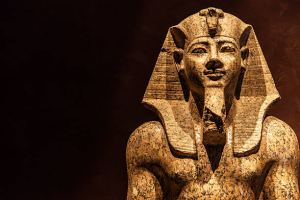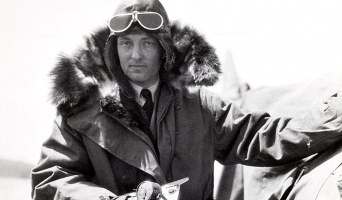Top 10 Facts about Strange Volcanoes
The three most common natural disasters in the globe are earthquakes, hurricanes, and volcanoes. Volcanoes, in contrast to the first two, are typically a ... read more...little easier to handle because at least you can see where they are and make preparations accordingly. At times, at least. But despite what we know about them, there are many weird volcanoes in the world with a variety of peculiar characteristics.
-
The majority of us consider a volcanic eruption to be a fairly important occurrence. Movies have done a lot to persuade us that these catastrophes completely ruin everything in their path, and that we should be grateful that they are so uncommon. There is also Santiaguito.
For the past 94 years, this volcano in Guatemala has been virtually continuously erupting. It simply never ends. And 1.2 million people reside a few kilometres from the volcano's base. The volcano is clogged with lava, and as the pressure grows hourly, it eventually explodes before subsiding once more. It's uncommon for the volcano to erupt with enough force to seriously harm the area, although it does happen occasionally.
Because Santiaguito's activity is so consistent, scientists have become interested in researching it to better understand how these things function. Locals simply keep hope that each eruption would be minor.
- Location: Guatemala
Muhammad Nasir Gazdar PhD MPH channel on Youtube National Geographic channel on Youtube -
Many of us choose cremation as the final disposition method for the remains of a loved one when they die away. This implies that you will eventually have a jar with your loved one's ashes in it, and often one of two things happens. Either you retain the deceased's bones at home on the mantle or you spread their remains according to their desires in order to commemorate them. You can perform this close to a volcano in Hawaii.
Hawaiians are accustomed to living near volcanoes since they have done so since Hawaii's formation, when most people would never want to go near one, alive or dead. The government is cool with you being a part of that after you pass away, as long as you abide by specific guidelines.
Remains must be scattered away from other park visitors. Keep it under wraps. Additionally, they ask that you refrain from doing so in a way that attracts attention to your actions. Basically, avoid making other people uncomfortable.
In Halema'uma'u Crater, ashes cannot be dispersed, and afterward, no one should be able to recognize the remains as human. However, if you pay the $25 charge and file out a permit, you can disperse them close to the volcano.- Location: Hawaii, USA
USGS channel on Youtube USGS channel on Youtube -
You can envision what a real volcano must be like, even if you've never seen one. The magnitude of the explosion, the cloud of smoke, and the magma rivers. What about the sound, though? Although it might be assumed that it will be loud, the actuality will be unlike anything else on Earth. At least, it is how it appeared when Krakatoa erupted in 1883.
During this eruption, thousands of people perished, and the lava flow was so great that it spread further destruction by crossing the ocean and hitting surrounding islands. People heard the blow 3,000 miles away on the other side of the Indian Ocean, four hours after the eruption.
It took that long for the sound to reach Rodriguez Island, but many there claimed to have heard it. The sound was also noticed by Perth, Australia, locals.
- Location: Indonesia
Geodiode channel on Youtube Tsha channel on Youtube -
The Philippine island of Camiguin has the appearance of a tropical paradise. The lush forest and stunning scenery hide the reality that nobody lives here and that not many people visit. The volcanic activity on the island is to blame for that.
Camiguin has more volcanoes than any other place on Earth in terms of area. On the island, there are more than 20 cinder cones—the typical shape of a volcano that most people are familiar with. All of them are taller than 100 meters.
It is not against the law to visit, and tourists do come to enjoy trekking, swimming, and even to climb the volcanoes. No one would want to spend an extended period of time in a region with the greatest concentration of volcanoes in the world.
- Location: Philippines
CriticalPast channel on Youtube Philippines Dream Adventures channel on Youtube -
There is no name for the volcano that contributed to create Crater of Diamonds State Park in Arkansas. In actuality, the park is a 95 million year old section of an eroded volcanic pipe. A farmer purchased the land, and as he was cultivating it in 1906, he found diamonds buried in the dirt.
For $36,000, the farmer sold the land to diamond miners. Though not all of the property was owned by the same individuals, over time, land was sold and competition over who could locate which gems heated up. A few of the fields were eventually made public. You might go to the town, pay a fee, and just search the earth for diamonds on your own.
In 1972, the state acquired all the land and created a state park there. By enabling guests to explore the area in quest of gems, they maintain the tradition. You can keep any that you find. Before being spewed into the soil, every diamond on the site was created in that old volcano. The volcano also produced other gemstones, which are also present there. Every year, visitors discover, on average, 600 diamonds.
- Location: Arkansas, USA
GeologyHub channel on Youtube Dan Hurd channel on Youtube -
Every year, Yellowstone Park welcomes almost four million tourists. In spite of the Covid-19 pandemic in 2020, nearly 3.8 million people visited the park. It is quite well-liked because of the stunning surroundings and distinctive landscape. This is true despite the fact that Yellowstone is situated above a supervolcano rather than just a volcano.
According to geologists, Yellowstone has only had three big eruptions, the most recent of which occurred roughly 664,000 years ago. However, it would cover multiple states in ash if it erupted. A supervolcano, as its name suggests, is a volcano, but it is considerably more powerful. There is a chance that it will erupt with the force of a super explosion.
A volcano must emit at least 240 cubic miles worth of volcanic material to be considered a super eruption. That much magma is a lot. The amount? Enough to cover Texas entirely with five feet of blazing fire. 74,000 years ago, one of the largest mega eruptions ever recorded caused a global cold that lasted for almost ten years. Therefore, if these things do occur, it's bad news. And if one might occur in Yellowstone, there is no evidence to support it. not anytime soon, at least.
- Location: USA
Smithsonian Channel channel on Youtube What IF channel on Youtube -
Neither Mount St. Helens nor any other recent eruptions can be considered the most intense volcanic explosion of the 20th century. This one was created in 1912 when the Novarupta volcano in Alaska erupted. Today's technology makes it simpler to predict when and where large eruptions may occur. In 1912, it was not the case. Additionally, due to Novarupta's isolation, not many people were aware of what was happening. People in Juneau, Alaska—about 750 miles away—were the last to learn about the eruption for about an hour after it started.
Around 7.2 cubic miles of material were released by Novarupta into the atmosphere, where they ultimately fell to the ground. In some ways, that exceeds the total number of previous eruptions in Alaska. Compared to Mount St. Helens, it was thirty times larger.
The inhabitants of the nearest island, 100 miles distant, were covered with ash for three days in a row. It dropped more than one foot deep and was so heavy that it toppled structures. It turned the sun black and prevented breathing. No outside life could endure it. Ash travelled so far that it was discovered in Africa after two weeks.- Location: USA
GeologyHub channel on Youtube DIVE into Math & Science channel on Youtube -
A cone-shaped volcano, at least, has a shape that somewhat reveals how it arises. It resembles a pimple on the Earth's surface that has broken through the crust. As strange as that metaphor may sound, the Paricutin volcano did a great job of illustrating it.
Paricutin, which is around 200 miles from Mexico City, is not an old volcano like many others. It began to form in 1943, essentially in front of the farmer whose property it first appeared on. Prior to the eruption of the volcano, there had been a lot of seismic activity in the area. The farmer went outside on February 20, 1943, to burn some brush. A sound was heard and a break in the ground was visible.
A crack in the ground caught his attention, and he also heard thunder. A few meters of ash and debris started to rise from the earth. Then came smoke and steam. The volcano had grown to a height of 50 meters by day's end. It had tripled in size by the end of the week.
- Location: Mexico
Henry Neville channel on Youtube GeologyHub channel on Youtube -
Sharknado was a cheap, campy movie about sharks in a tornado that became surprisingly popular. It was intentionally ridiculous and silly. But if they wanted a dash of truth, they should have chosen the sharkano, a shark-filled volcano that was actually found by scientists in 2015.
The Solomon Islands' coast is 20 miles from the Kavachi volcano. Even though it was evidently not erupting at the time, it is one of the most active volcanoes in the ocean. The water is still warm, acidic, and sediment-filled. You wouldn't expect to discover life there, and sharks are definitely not to be found there.
They captured footage of hammerhead and silky sharks swimming inside the volcano. As the volcano erupted, scientists intended to tag sharks to observe how their habits changed. According to rumor, either the sharks are aware of an eruption and flee the region, or they erupt with the volcano.
- Location: Solomon Island
National Geographic channel on Youtube GeologyHub channel on Youtube -
They refer to Ol Doinyo Lengai, a volcano in Tanzania, as "The Mountain of God," and it is unquestionably one of the strangest volcanoes in the world. It is the only volcano where carbonatite is actively erupting. The majority of erupting volcanoes release silica-based material. In this lava, sodium, calcium, and CO2 predominate.
Compared to regular lava, the natron carbonate from the Mountain of God is significantly cooler. At the moment of eruption, it is only approximately 500 degrees Celsius and doesn't reach hot enough to turn red. Volcanoes in their natural state can reach temperatures of more than 1,250 degrees Celsius.
The Mountain of God's lava is rumored to be so cool that someone has reportedly survived falling into it.Much thinner than regular magma, the lava that spews forth. It flows almost like water when there isn't any silica to make it thick. So instead of flowing down a mountain slowly and slowly, the lava runs like a river, faster than a person could flee.
- Location: Tanzania
Photovolcanica channel on Youtube GeologyHub channel on Youtube































